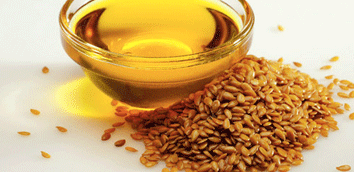Cushings Disease in Dogs
Cushing’s disease in dogs is usually caused by either a tumor in the adrenal gland or a tumor in the pituitary gland. In both cases of Typical Cushings, the end result is the same: excess cortisol production. Cortisol is a stress hormone naturally produced in the adrenal gland. If there is a tumor touching the adrenal gland, the adrenal gland is stimulated to produce cortisol. This can result in an overproduction of cortisol where the affected dog is in a constant, elevated state of stress.
The tumors causing the disease are not necessarily cancerous; they could be benign tumors that push on the pituitary or adrenal gland and over-stimulate the adrenal gland. Treatment should be considered either way.
Surgery is the only real cure for Cushings in dogs, but in most cases, surgery is not an option. 80% of Cushings cases involve a tumor in the pituitary gland, which is located in the brain. Brain surgery on dogs is not recommended due to the high risk and exorbitant cost. Surgery on adrenal gland tumors is usually too dangerous as well. It is often recommended to explore natural, less expensive, homeopathic treatment options for Cushings.
Treatment of Cushings in dogs is a matter of managing symptoms. If the heightened cortisol levels in dogs with Cushings can be controlled, then some or even all of the symptoms can be controlled as well. Cushings in dogs is an extremely common hormone problem that generally affects older dogs. While Cushing's is not necessarily fatal, it can cause extreme discomfort and other complications that can lead to premature death. Many look to natural or homeopathic treatment remedies to help alleviate Cushings symptoms.
Symptoms of Cushing’s in Dogs
Some of the most common symptoms of Cushing's in dogs are: excessive water drinking and urination (referred to as PU/PD), ravenous appetite, loss of hair, muscle weakness, panting, skin problems, and lesions on the skin (especially on the belly). Another symptom associated with Cushings is a bloated/expanded belly. Dogs with Cushing’s may appear to have experienced weight gain or loss, but it is usually more of a redistribution of weight, where more weight is carried in the tummy and the dog experiences a loss in muscle tone. Energy levels can vary depending on the stage of the disease. At first, as a result of the elevated cortisol levels, dogs with Cushing’s may be hyperactive, causing ravenous eating and drinking, but after long periods of excessive cortisol, activity levels may drop and dogs with Cushing’s can burn out and become lethargic.
Natural treatment can help alleviate these symptoms.
What is Cushing’s in Dogs?
In its most basic form, Cushing’s disease is a hormone problem that causes the endocrine system to produce too many corticosteroids, otherwise known as cortisol. This causes atypical growth of certain parts of the dog’s body, while also engendering several extremely uncomfortable and problematic symptoms (see symptoms above). Unfortunately Cushings is not strictly curable, but it can be treated. Symptoms can be addressed with chemo drugs or natural holistic supplements.
Different Types of Cushing’s Disease
Though Cushings disease in dogs is mainly classified as a single disease, there are two separate causes, resulting in a dichotomy in treatment and overall classification: the causes are pituitary and adrenal.
- Pituitary Dependent Cushing’s Disease:
The majority of Cushing's cases involve Pituitary Cushing’s in dogs. This is caused by a tumor located just below the brain (near the pituitary gland).
- Adrenal Dependent Cushing’s Disease:
The other, less common type of Cushing's is caused by a tumor forming in one or both of the adrenal glands.
Pituitary tumors are common in small breeds, while adrenal tumors are common in big dogs. Both PD Cushing’s disease and AD Cushing disease in dogs have similar symptoms and are treated in similar fashions; however, treatments slightly vary based on type and severity.
What types of dogs are most susceptible to Cushing’s Disease?
Cushing’s in dogs usually affects elderly dogs (with an average diagnosis of around 10-11 years old and the youngest being around 5 years old).
Females are more susceptible than males. All breeds are susceptible, but dog breeds at higher risk are Boston, Yorkshire, Bull, Silky and Scottish Terriers, German Shepherds, Poodles, Dachshunds, Jack Russells, Staffordshires, and Beagles.
Atypical Cushing’s Disease in Dogs:
Atypical Cushings disease is caused by an adrenal gland tumor (as with regular Cushings), but with atypical Cushings, there is no overproduction of Cortisol. Canines with atypical Cushings still show normal Cushings syndrome symptoms, but rather than excess cortisol, atypical Cushings dogs experience heightened levels of sex steroids (i.e. estradiol, progesterone, and aldosterone). Aromatase enzyme inhibitors (such as melatonin and some chemotherapy drugs) can decrease estradiol, the sex steroid responsible for many of the symptoms of Cushings Disease. Studies have shown that treatment with flaxseed lignans and melatonin can be very effective in both cases of atypical Cushings and Cushings. The University of Tennessee (an authority on adrenal disorders and a leader in breakthroughs in Cushings treatments) conducted a study led by Kelly Fecteaus, Head of Endocrinology, to test the effectiveness of lignans and melatonin on Cushings in Dogs and found that the combination of lignans and melatonin not only reduce cortisol, but act directly upon adrenal tumor cells, effectively treating both typical and atypical Cushings disease.
Click here to read more about the study.
What Can You Do?
Responding to Cushings or discovering if your dog has Cushing's requires finding out as much information as possible and consulting your veterinarian. Cushing’s disease can be treated; but, if the right steps are not taken, the dog will suffer. Our goal with this website is to increase awareness of Cushings disease and of treatment opinions, historical information, symptoms and studies based on the disease. We hope to give you the information you need to put you on the right path towards dealing with Cushing disease in dogs.
Click here to read more about natural, holistic treatment options Click here to read more about medical treatment options
-
Introduction There is one major threat to the health of your dog’s joints–arthritis. Arthritis is common in dogs and all dogs are susceptible to it, but that doesn’t mean that your dog has to endure a life of pain and discomfort. Many factors contribute to arthritis in dogs. Genetics plays a major role in causing […]
Continue Reading...
-
If you are taking lignans and melatonin as a hormone balancer or are giving the combination to your dog, cat or other pet for Cushing’s syndrome or another hormone-related condition and are not seeing the results you expect, there are several things you can try: Give it Time! Impatience is probably the most common cause […]
Continue Reading...
-
Key Summary The final stages of Cushing’s disease in dogs are marked by increased weakness, worsening symptoms, and a decline in quality of life. Understanding what to expect during this stage can help pet owners make informed decisions and provide compassionate care. Understanding the Progression of Cushing’s Disease Cushing’s disease is a chronic condition caused […]
Continue Reading...
-
Key Summary Cushing’s disease in dogs can be difficult to detect at first. The earliest signs often include increased thirst and urination, muscle weakness, hair loss, and a pot-bellied appearance. If your dog is showing one or more of these symptoms, it may be time to consider testing for Cushing’s. Early detection is key to […]
Continue Reading...
-
Cushing’s disease is a common endocrine disorder in dogs, especially among seniors. It’s caused by an overproduction of cortisol, a hormone that regulates stress and metabolism. While the condition isn’t immediately life-threatening, it can affect your dog’s quality of life and longevity if left untreated. Key Summary: What Is Cushing’s Disease in Dogs? Cushing’s disease, […]
Continue Reading...







